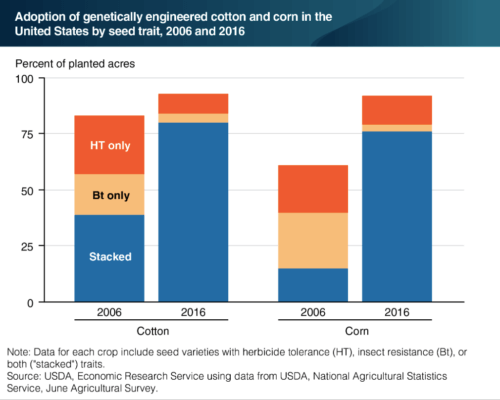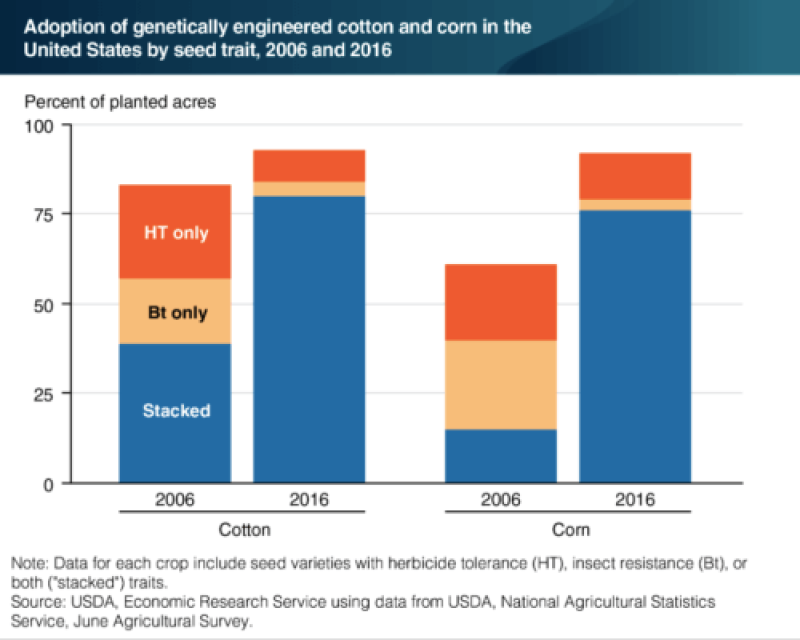
Genetically engineered (GE) seeds are widely used in U.S. field crop production. . . . Seeds that have both herbicide-tolerant and insect-resistant traits are referred to as “stacked.” Recent data show that the adoption of stacked corn varieties has increased from 15 percent of U.S. corn acres in 2006 to 76 percent in 2016. Adoption rates for stacked cotton varieties have also grown, from 39 percent in 2006 to 80 percent in 2016. Generally, many different GE traits—each aimed at a specific herbicide or insect—can be stacked; varieties with three or four GE traits are now common. Research suggests that stacked corn seeds have higher yields than conventional seeds or seeds with only one GE trait. This chart is based on data found in the ERS data product, Adoption of Genetically Engineered Crops in the U.S., updated July 2016.
The GLP aggregated and excerpted this blog/article to reflect the diversity of news, opinion and analysis. Read full, original post: Genetically engineered corn and cotton with both herbicide tolerance and insect resistance are now the norm































